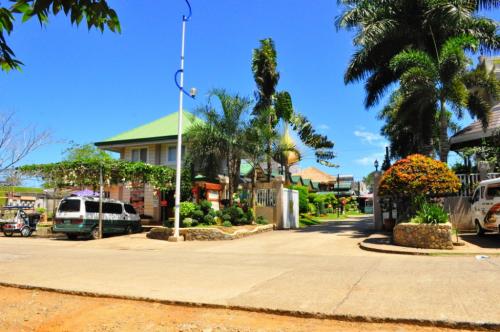
Demographic
The dominant religion of Bais is Roman Catholicism.
Culture
An annual fiesta is held each year on September 10 in honor of the city's patron saint San Nicholas de Tolentino, a celebration inherited from the Spanish era. On this occasion, most of the residents prepare food for anyone who visits the place. It is a tradition practiced not only in Bais but in most towns and cities in the Philippines. Lately the celebration has included mardigras and parades.
Christmas is a very important season in Bais CIty. Every yuletide season they have an annual giant Christmas tree who showcase the creativity of the Baisanons and who would forget the whales and dolphins which the city is made famous of.
Economy
Bais City is the largest producer of raw sugar in Negros Oriental. There are two sugar mills in the city. The Central Azucarera de Bais was established by Tabacalera of Spain in the early 1900s and is one of the oldest in the country. The other mill, URSUMCO (United Robina Sugar Milling Corporation) was formerly UPSUMCO (United Planters Milling Corporation) and constructed in the mid 70's by Marubeni Corporation of Japan as a project of Ignacio Montenegro (also of Spanish roots).
Geography
There are two bays in the area, hence the name "Bais". The shore line is mostly mangroves, which are in danger of destruction due to the increasing population. The richness of marine life in the bays is because of these mangroves.
Bais City's bays are widely known to have one of the most beautiful coral reefs in the area.
The Pelarta river runs beside the city center. There is, however, a dispute that the name Bais was taken after the eels locally called "Bais" that used to thrive in this river. The river has been the source of irrigation water for the nearby sugar farms. This has been vital in the success of sugar plantations in this area. This river also has a big influence on the city's geography, as it deposits sediments in the former mangrove areas during the (formerly annual) flood season. These former mangrove swamps have now dried out and become populated with residents. In the late seventies, under the government of Genaro Goni, there was established a river control system stretching from the city center towards the low lying areas in order to lessen flooding during the rainy season.
Barangays
Bais City is politically subdivided into 35 barangays.
* Barangay I (Pob.)
* Barangay II (Pob.)
* Basak
* Biñohon
* Cabanlutan
* Calasga-an
* Cambagahan
* Cambaguio
* Cambanjao
* Cambuilao
* Canlargo
* Capiñahan
* Consolacion
* Dansulan
* Hangyad
* La Paz
* Lo-oc
* Lonoy
* Mabunao
* Manlipac
* Mansangaban
* Okiot
* Olympia
* Panala-an
* Panam-angan
* Rosario
* Sab-ahan
* San Isidro
* Katacgahan (Tacgahan)
* Tagpo
* Talungon
* Tamisu
* Tamogong
* Tangculogan
* Valencia
Source: